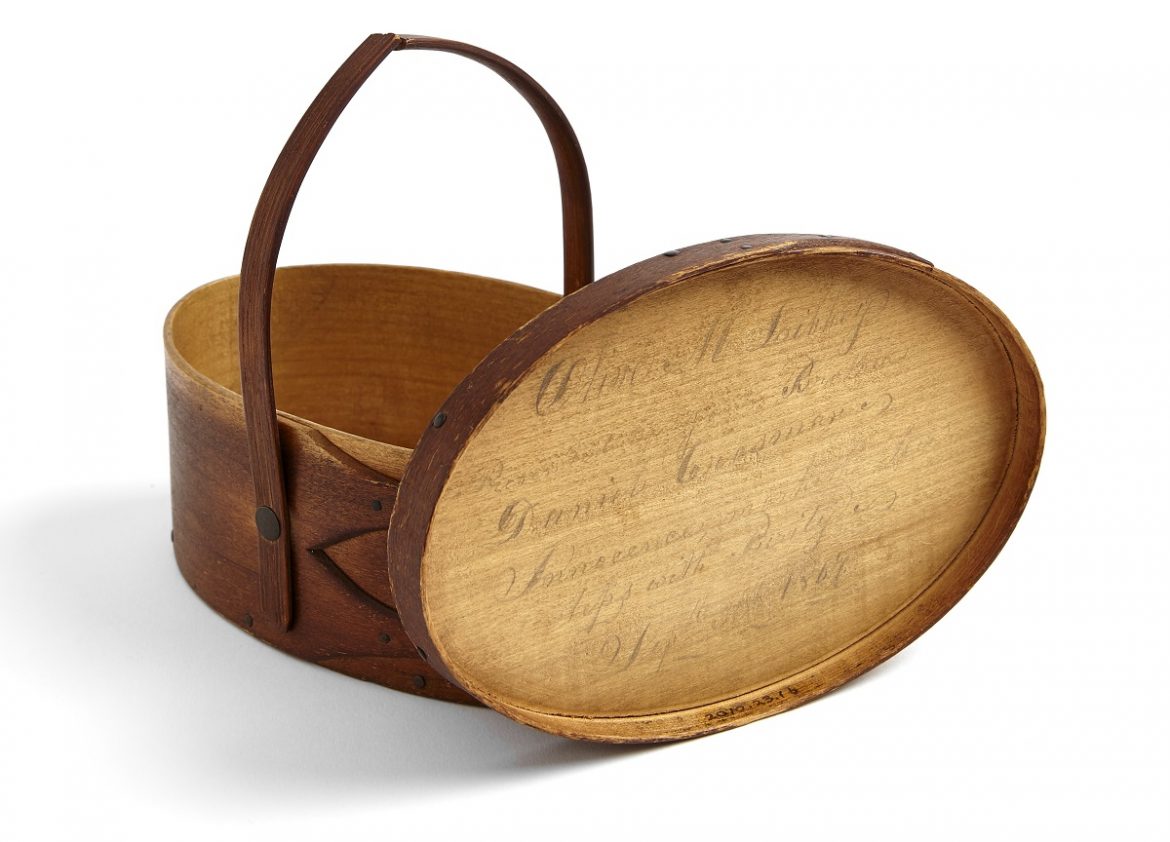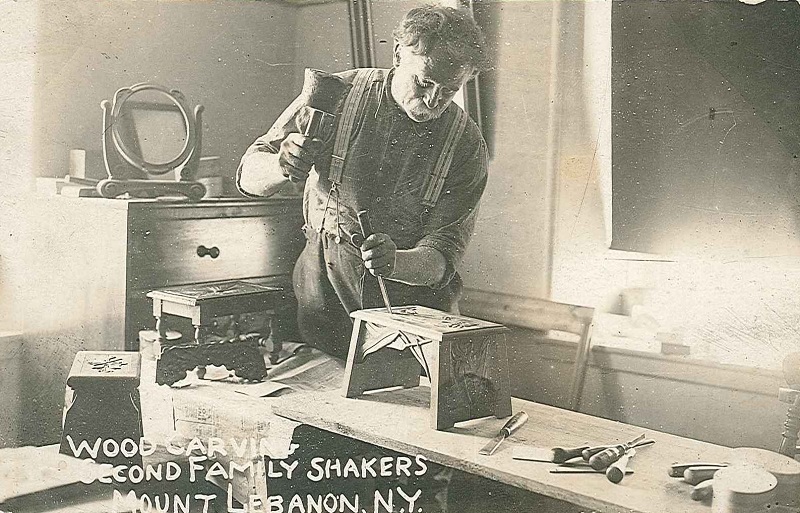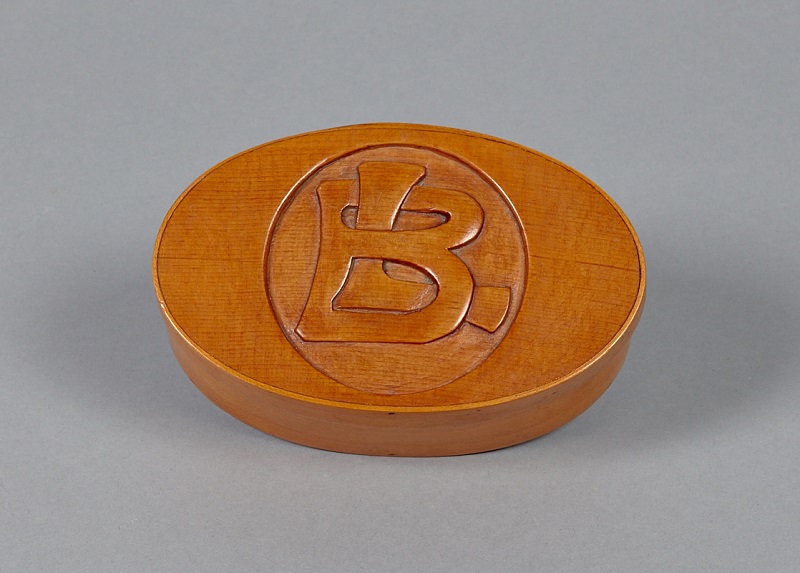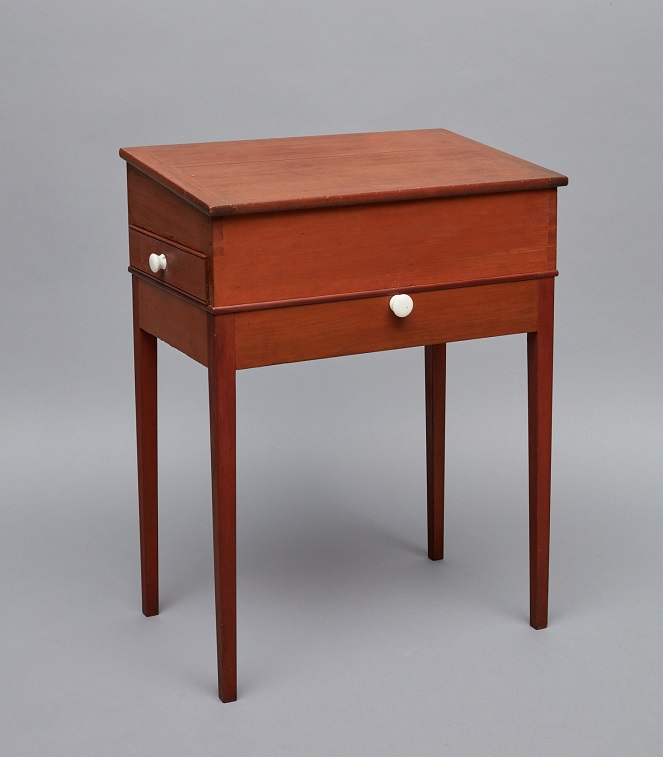
Among the most pressing concerns of the early Shaker leaders, in a society pledged to celibacy as a means of fostering a communal sense of union, was maintaining strict separation of the sexes. This is not to suggest that brothers and sisters were not to have any contact; rather, the development of interpersonal relationships beyond the bonds of spiritual union were to be prevented. Believers could, and did, express warm feelings in the form of gifts.
Among the most pressing concerns of the early Shaker leaders, in a society pledged to celibacy as a means of fostering a communal sense of union, was maintaining strict separation of the sexes. Brethren and sisters worked in separate shop buildings, and the spaces they shared, such as dwelling and meeting houses, were constructed with separate doorways to prevent unnecessary contact. This is not to suggest that brothers and sisters were not to have any contact; rather, the development of interpersonal relationships beyond the bonds of spiritual union were to be prevented. Believers could, and did, express warm feelings in the form of gifts.
Four objects in the museum’s collection were made by brothers as gifts for sisters. The first, and oldest of the four, is a lidded oval carrier. The followers, or sides, are made of birch veneer, and the header, or base piece, is of white pine, the lid of basswood. Unfortunately the hickory handle has cracked, but the underside of the lid bears a clear, legible inscription handwritten in pencil: “Olive M. Libbey / Presented by your Brother Daniel Crosman, Innocence marketh her steps with Purity. 9 September, 1867”.

Elder Daniel Crosman (1810-1885) was admitted to the Mount Lebanon Church Family in 1822. He served as elder from 1844 until his death in 1885, and also worked on the family’s farm and orchard, and from the 1840s onward made bentwood boxes such as oval boxes and spit boxes. On September 24, 1867, a Church Family journal notes, “A company of visitors came here from Canterbury, vis. Sullivan Wright, Joseph Hersey, Sarah Woods, Olive Libbee (sic), Nancy Danforth, & Lucy Willard. They have been to Groveland, & Watervliet, N.Y.” Evidently Elder Daniel was impressed with Sister Olive’s religious devotion, although perhaps he made boxes for all of the party.
Two oval boxes in the museum’s collection, although not marked by the maker, have been attributed to Brother William Perkins (1861-1934). Brother William joined the Shakers at Mount Lebanon around 1890. He lived at the North Family until 1915, and then went to the Second Family. He was a woodworker and carver, and made oval boxes, carved stools, picture frames, and other wooden goods for sale in the Shaker store.

Both of the oval boxes are made of maple, and both feature carved lids. On one, the name “EM Offord” is carved, the first letters interwoven and overlapping. This box was made for Sister Emily Offord (1848-1896). Sister Emily came to the Mount Lebanon Shakers in about 1850 with her father, William Offord, Sr., and several of her siblings, most of whom remained Shakers. She lived at the Upper Family in Canaan. It is not known when or how Brother William and Sister Emily developed a relationship worthy of commemoration with a decorated box. Both were English-born, Brother William in Manchester and Sister Emily in Richmond, so perhaps they felt a kinship over their shared heritage. Though the box is inscribed “June 14, 1869” on the bottom, the significance of that date is not clear; though the exact date when Br. William joined the Shakers is not known, he does not appear in any records prior to the 1890s and could not have made the box at that time.

The second of the two boxes believed to be made by Brother William bears the initials “LB”, for Sister Lillian Barlow (1876-1942). Brother William and Sister Lillian managed the manufacture and sale of Shaker chairs until about 1940. Though the Shaker society had declined greatly in numbers (the Church Family property was sold in 1930), they continued to strictly adhere to the Shaker life. Sister Lillian eventually gave the box to a young boy who shared her initials, and it was acquired by the museum in 1999.

Finally, there is in the museum’s collection a slant-top desk with a single dovetailed drawer. The most remarkable aspect of the desk is its diminutive size; it is only 28 5/8” tall and just under 22” wide. It was donated to the museum by Sister Mary Dahm, who was then a trustee at the Hancock, MA community. According to Sister Mary, the desk was made for her natural sister, Sister Grace Dahm (1874-1958), by Brother Abram Ellis (1813-1887) when she was a child living at the Watervliet, NY Shaker community as a reward for her penmanship. Although the desk is very small, Sister Grace was petite even as an adult and was able to use the desk throughout her life.

By late in the 19th century, norms about the separation of the sexes had relaxed enough that Brother Daniel Offord, in the September 1891 Shaker publication Manifesto, wrote, “On the 21st of July we had a very pleasant visit with Br. Watson Andrews of North Union, OH. He was a very interesting visitor; but that interest would have increased many fold if he had brought some sisters along.”
I appreciate this scholarly publication Thanks